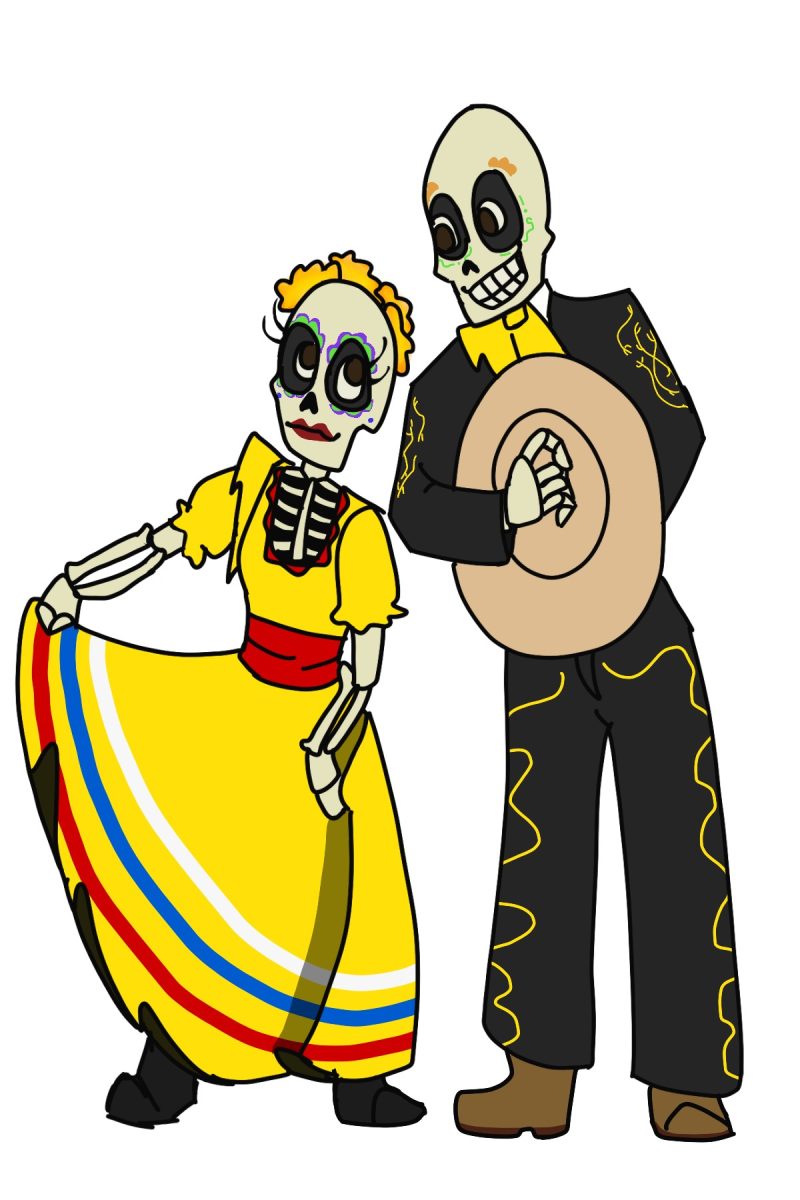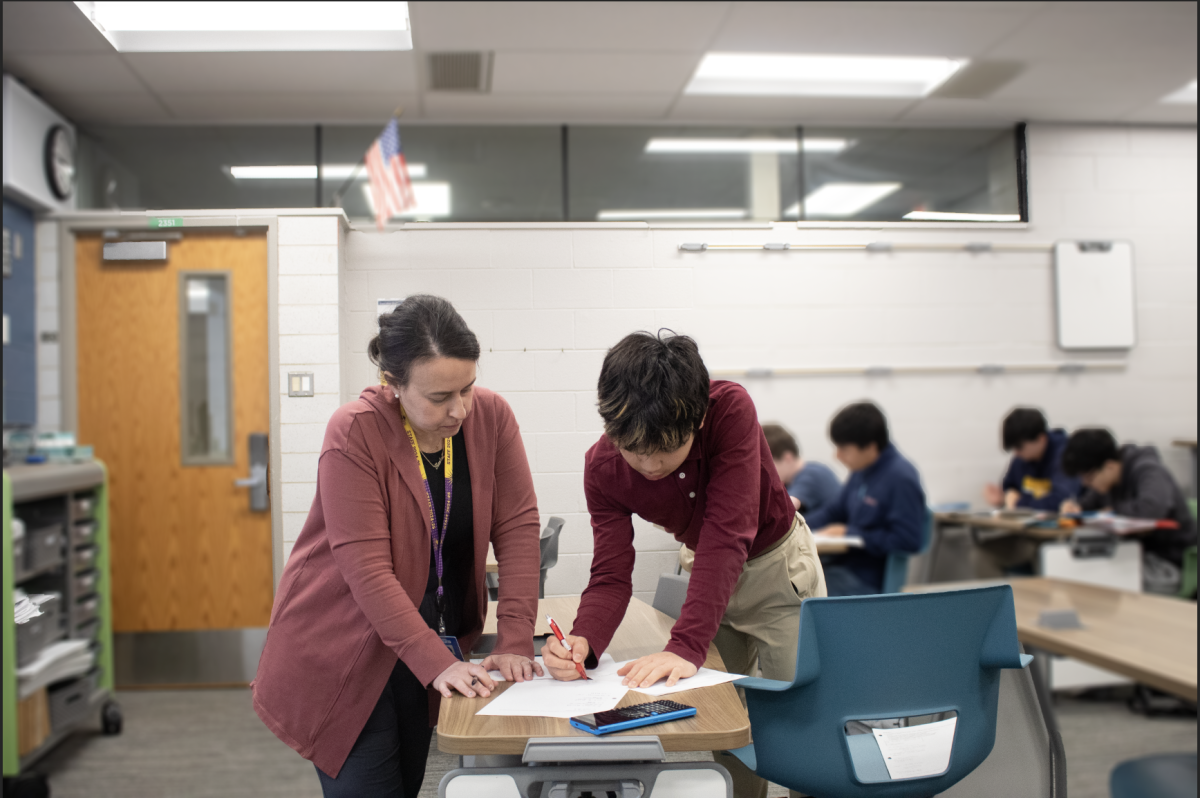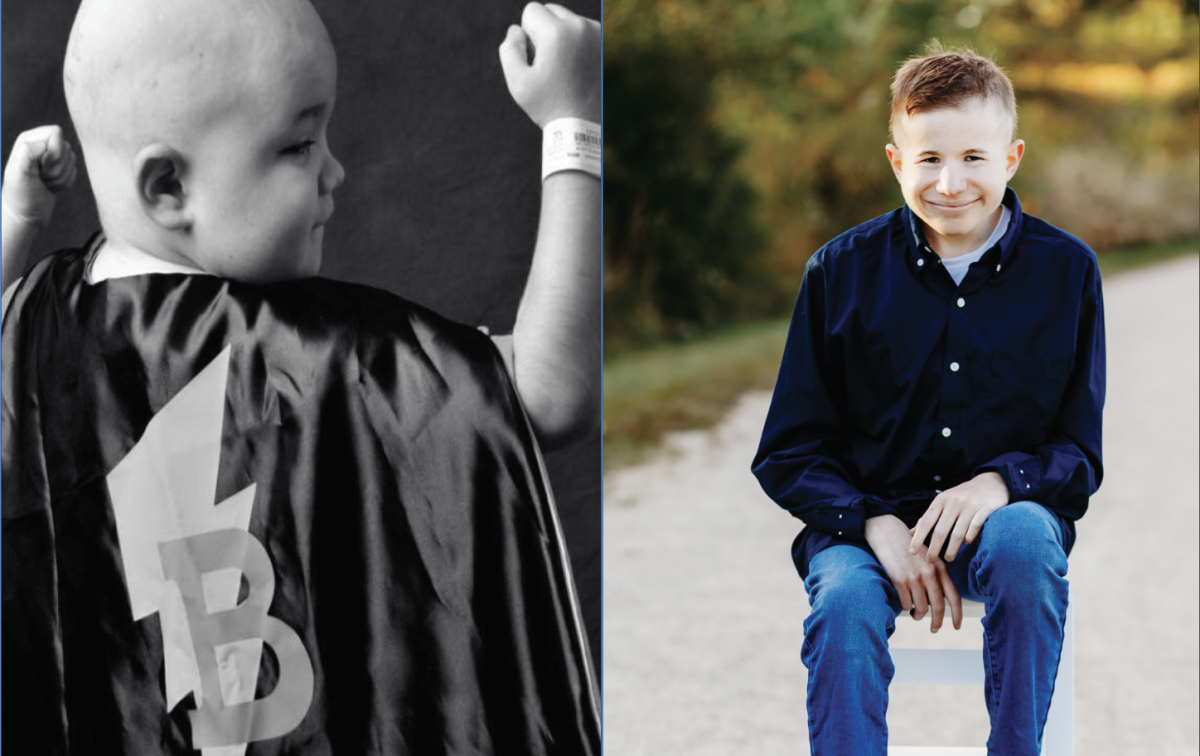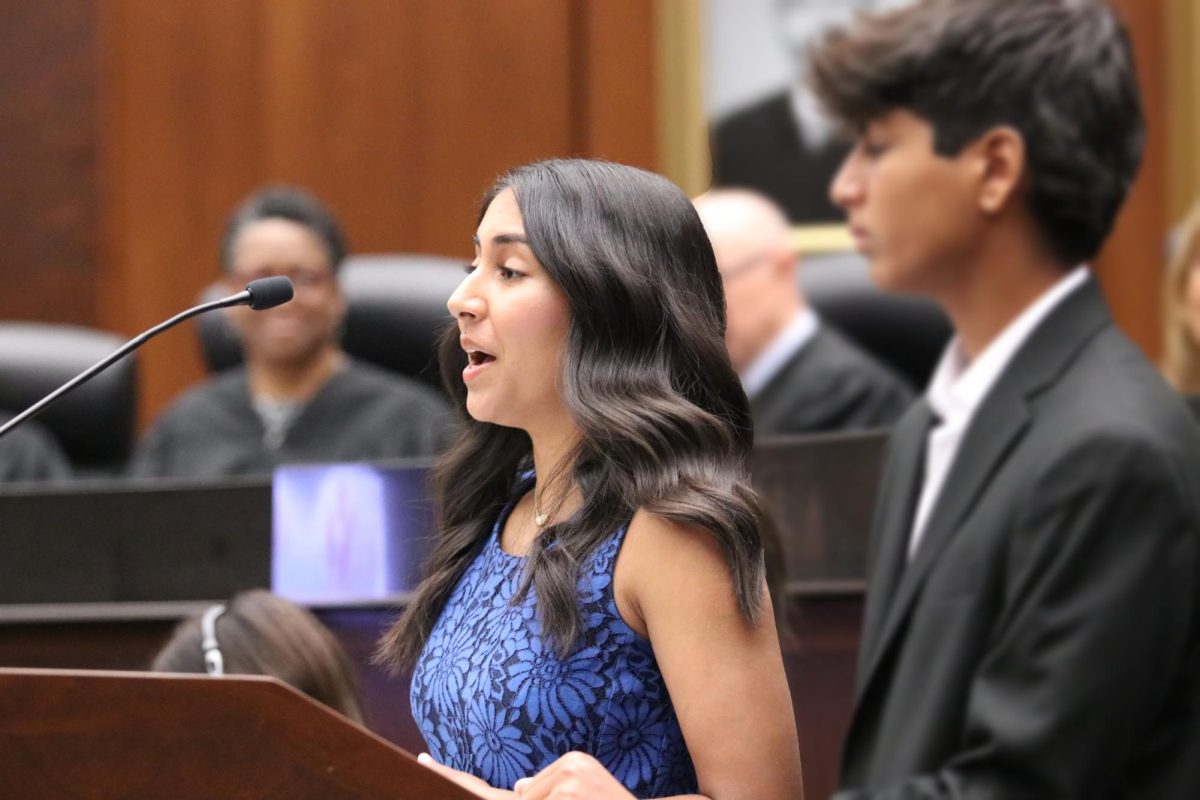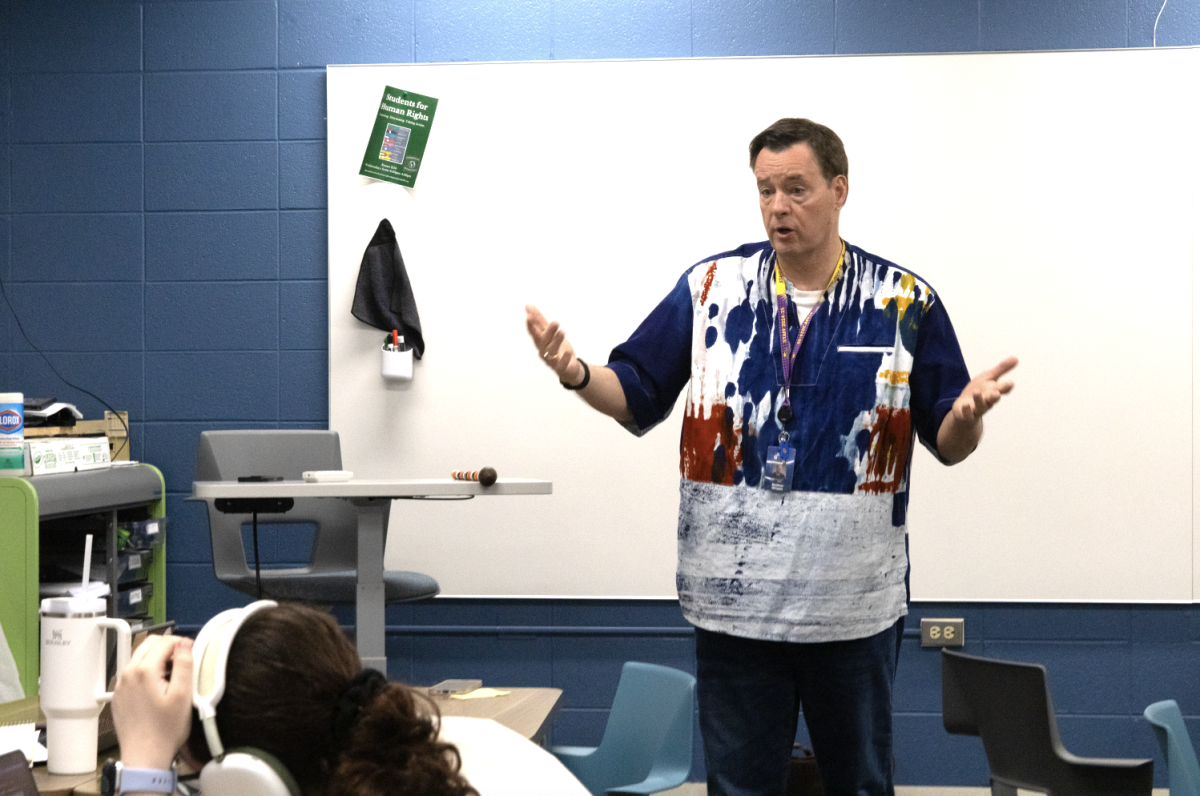Vases filled with bouquets of vibrant orange and yellow marigolds lie on the Ofrenda, an altar typically displaying colorful objects, placed adjacent to framed photos of loved ones who have died. Deceased family members’ favorite foods bring forth comforting smells of the past. These objects provide reminders of deceased loved ones on Dia de los Muertos or Day of the Dead, sophomore Mady Gleason explained. Dia de los Muertos is a traditional Mexican holiday dedicated to honoring deceased loved ones on the days of November 1st and 2nd, according to dayofthedead.holiday. Honoring the dead is a major part of Dia de los Muertos, however, the focus of death is centered around celebration rather than mourning, Gleason said.
“[I feel] the connections to the people that have passed,” Gleason said. “[Dia de los Muertos] is a day to remember [those who have passed] and embrace that they were a part of your life and they made you who you were.”
Junior Natalie Ramirez feels connected to her family through Dia de los Muertos because the day allows her to spend time with her family and honor members pictured in frames.
“My favorite part [of the celebration] is having all our family come together and admire the Ofrenda that we make,” Ramirez said.
“We use it every year, we reuse it and we get together. We [talk] about good times with [family], we [talk] about hard times, we cry and laugh and enjoy the moment.”
Family connections grow stronger as traditions, such as baking bread, are revisited, Ramirez explained.
“My favorite [memory is] the traditional bread that comes along,” Rameriez said. “[it’s] covered with pink sugar.”
Though the holiday originated in Mexico, it is celebrated across many countries, sophomore Isabella Castillo explained. Despite not having Mexican heritage she practices similar traditions.
“My mom, who isn’t Latina at all, puts up candles around the house, she hangs up photos, she has us remember prayer songs,” Castillo said. “It’s like our own Dia De Los Muertos.”
Different parts of South do different things to celebrate the holiday as well. Spanish Teacher Veronica Reyes prepared a special activity for her Spanish Heritage Class to help highlight the holiday’s importance. This year she had her students create poems about family members, dead or alive, as a way of honoring them in a fun, creative manner, Reyes explained.
“In our [Spanish Heritage] program, we make an effort to have the kids do something that will connect them to those important celebrations that are important in our culture,” Reyes said.
Dia de los Muertos is an important holiday for many students and staff, Reyes explained. It is a festive holiday filled with different celebrations all connecting back to the idea of celebrating family and culture.
“[The celebration is] a reflection of our community to respect and to honor all traditions and learn about other cul-
tures,” Reyes said.



